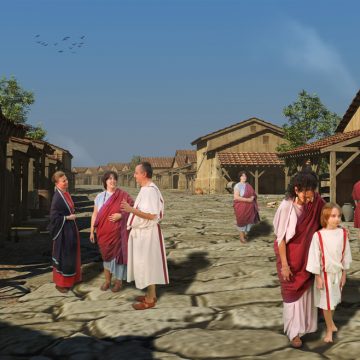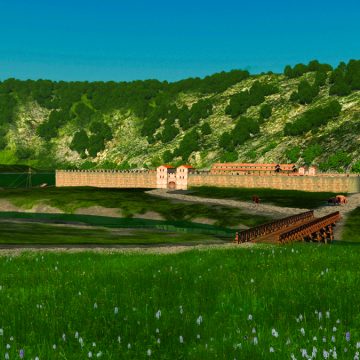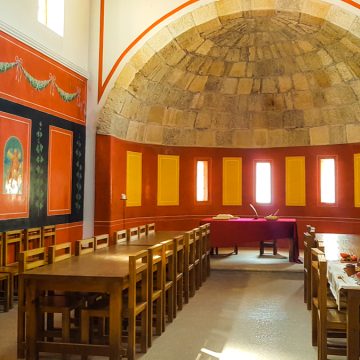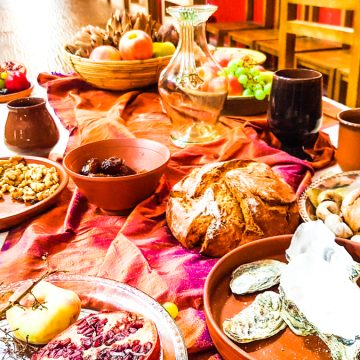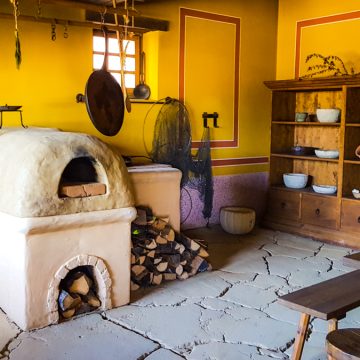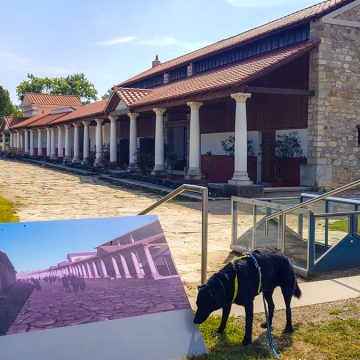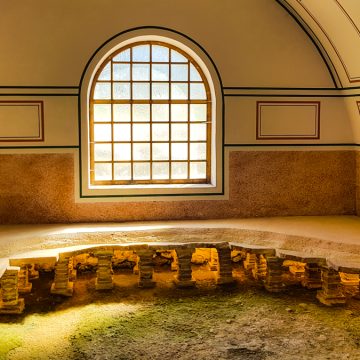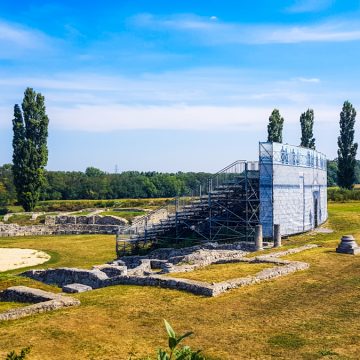Romans News
News from the Ancient Romans at the Danube Limes
The Danube has already seen quite a bit. If you're chilling in the sun on Vienna's Danube Island today, cruising through the Wachau region by boat, or in Passau and Budapest or strolling along the Danube promenade in Passau and Budapest, could close their eyes for a moment (watch out for cyclists!) and transport themselves back in time 1,800 years: To the Romans and their everyday life in Raetia (eastern Bavaria), in Noricum (our present-day Austria) and to Pannonia (Hungary) and "their" Danube back then. Because the Danube could tell a lot about the time when it was still a wild, meandering border river to the barbarians, a customs border area equipped with monumental forts and watchtowers and here military fleets lay at anchor.
No cool bars, beach resorts, dog zones and Danube restaurants - but the " Wet" Limes, as the Danube was later also called - was an external border to the unloved neighbors, but also an important customs border, where not always only fighting but also lively trade was done. The road along this Danube border, once called Via Istrum (the Danube Way), however, somehow still exists today: the Via Istrum of the Romans of yore is today, roughly speaking, our B1, the federal highway between Vienna and Linz, and the Limes was thus the ancient forerunner of the Road of Emperors and Kings.
How can one imagine Roman life at that time in a city at the Limes?
Were the "ancient Romans" only fighting, discussing and playing "bread and games"?
Let's sit for a while on the Danube promenade in Passau, Vienna or Budapest or let's look down from the Bratislava UFO Tower or the Devin Ruin on the river, which has experienced more than we will ever know about it. What has been handed down?
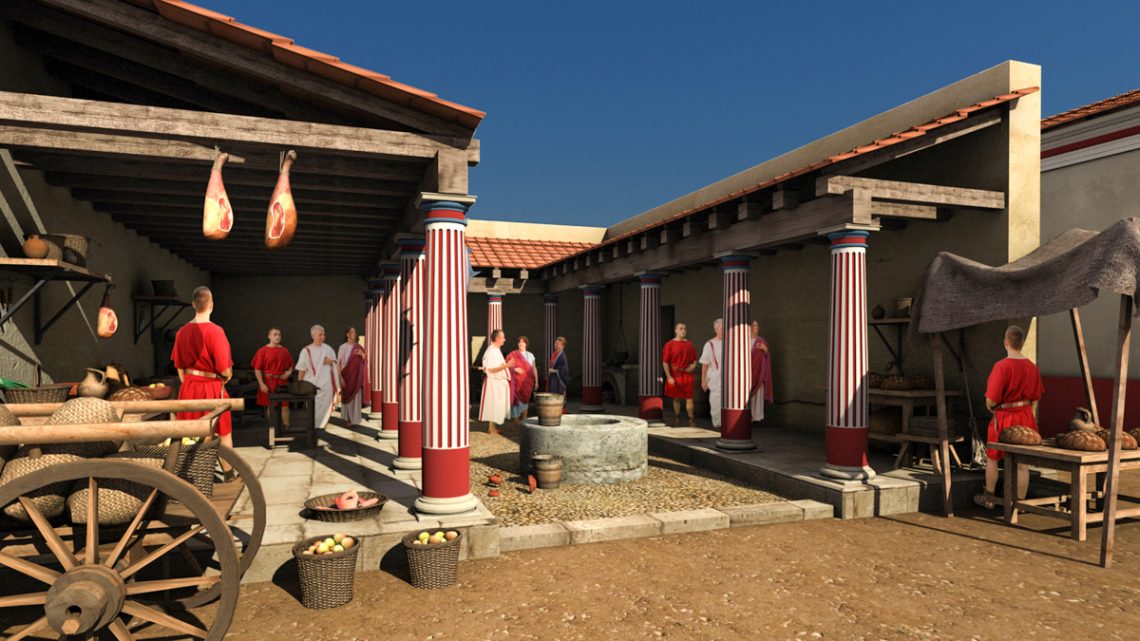
In addition to the military camps and relief camps along the Danube Limes, there were always civilian camps. There, real life took place, so to speak: With entertainment, markets, brothels, barbers and whatever else was needed for daily life. Or the villages near a military camp profited from the military on site and grew, also economically.
Things were not that different from what they are today in our cities, even in these large and small cities of the Roman Empire. Here, too, people went to the theater, to school, to the hairdresser and to the beautician. People drank fortified wine, had fasting cures with hunger days prescribed for them (even intermittent fasting, as it is so modern today, was known long ago), and those who had a particularly large villa and many slaves sometimes flaunted it around in front of their friends like a new smartphone.
Gladiators were virtually the YouTube stars of today, had stage names, many followers (followers and fans) and there were actually also fan articles. Gladiators were particularly revered and idolized because of their masculine charisma. Actors, on the other hand, were not as highly regarded as they are today, and were considered "dishonorable," but despite this, or precisely because of it, sometimes had a huge troop of admirers behind them. We know enough of that today, too. The charioteers in the Circus Maximus suffered a similar fate: screaming fan communities were not uncommon back then.
At the hairdresser was gossiped and if one particularly badly shaved, the word spread quickly. Donkey's milk was considered the anti-aging serum par excellence. In general, similar ideals of beauty applied at that time as today, as white teeth as possible and a distinguished, slightly swaying gait with women might have been well written with the men's world. Just as today, body hair on women was considered unattractive elsewhere than on the head. Likewise, women were expected to have a light complexion, while men were allowed to get a good dose of sun in order to appear masculine: The term "shade seeker" at the time was probably meant as derisively as our "shade parker" is today. The children were taken to school by educated slaves (instead of au pair girls) and often bought a snack "on the go" on the way, because there was no time for it at home.
Do we need any more parallels to today? More news from the ancient Romans, while in today's world we hang out by the Danube, walk the dog, roast in the sun and show off our tattoos? Speaking of tattoos. The educated Romans didn't like them at all, they were considered "barbaric" - Cicero, for example, was angered by the body paint of some bathers and had to write one of his many letters of complaint about the decay of morals. And pets? Of course, the Romans had them, too. First and foremost, of course, was the dog, which on the one hand was allowed to act as a guard dog, and on the other hand could also be used as a lap dog. Because cats were unknown for cuddling, they served in the house only as mice hunters. Birds were also popular, but only educated ones: they had to be able to parrot at least a few words and impress any guests with them. There were vegetarians and vegans - partly voluntarily (because of Pythagoras) partly involuntarily (because meat was expensive) and real meat tigers preferred to eat pork or chicken.
Did the ancient Romans go on vacation? Yes, when they were rich - but a river cruise on the Danube would have "hunted" people back then, shipping for entertainment or recreation did not yet exert any fascination on people back then: Too dangerous and much too uncomfortable. The ships in our latitudes at that time were mostly freighters or military ships. When Roman citizens traveled, it was not for beautiful landscapes or nature experiences, but solely for culture. Athens, Delphi, Ephesus, Corinth or Egypt and Alexandria - these were the dream destinations of a rich and educated Roman and, of course, a boat trip on the Nile was inevitable.
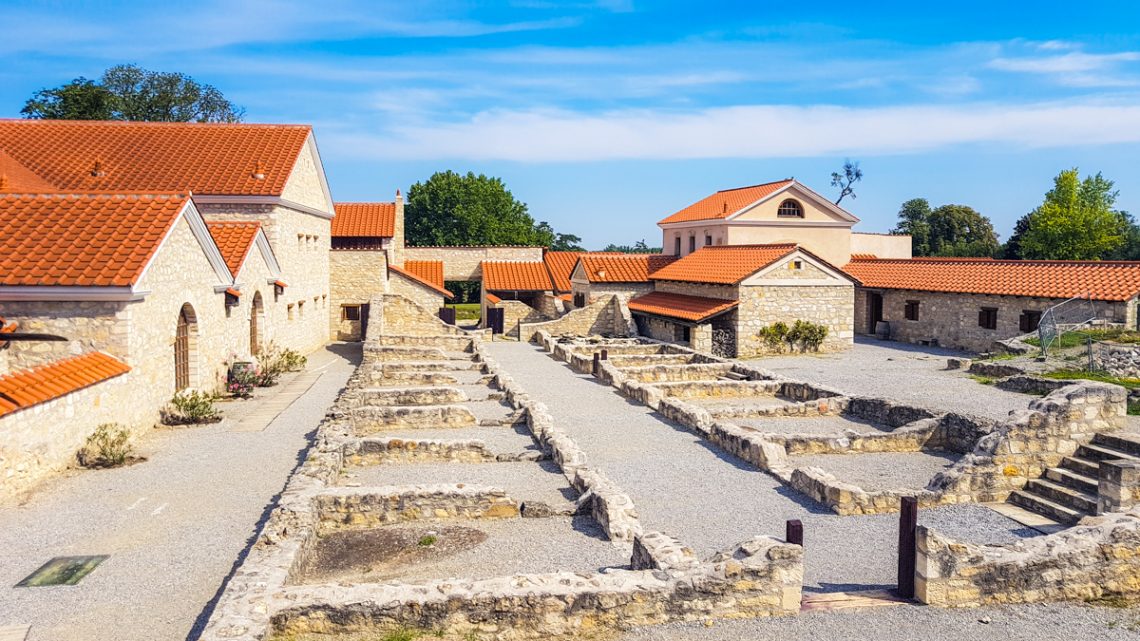
The largest city of the Roman Empire was Rome, which at its best may have had about a million inhabitants. Carthage had 300,000, Ephesus 100,000 and Cologne about 50,000 inhabitants. In Rome, there were daily pedestrian jams and traffic jams. Caesar had even imposed a daytime ban on carts - trucks and paddy wagons were not allowed to enter the city during the day - does this sound familiar? From Salzburg, Hallstatt or the Tyrol? Even back then, there were botched construction projects, floods, youth gangs and bad air in the city.
From Regensburg to Budapest, along the Danube and thus the Limes, there were some ancient, real large cities of the Roman Empire, such as Regensburg, Enns, Wels or Budapest. Carnuntum, too, was a large civilian city with all the trimmings, in addition to being a military camp. Here at the Rhaetian or Pannonian Limes we didn't have to deal with the big city problems like in Rome, but Carnuntum with the rank of a "Colonia" counted 50.000 inhabitants and had a size of 10km².
With a lot of imagination we can imagine all this today, but even better immersion in the Roman Empire here with us at the Danube Limes and the Road of Emperors and Kings can of course by means of modern, multi-dimensional media. A multitude of Roman museums between Regensburg, Passau, Vienna and Budapest make it possible: The remains of the archways, forts or watchtowers can be seen three-dimensionally and displayed on your smartphone. Or as in Carnuntum: walk through an authentic Roman home on Roman underfloor heating, warm up in a heated thermal bath with wall paintings and be part of a Roman festival. Since fall 2019, visitors to Tulln have also been able to follow in the virtual footsteps of the Romans - with a completely new app called Virtuelleum on your smartphone, a walk through the city even becomes three-dimensionally Roman.
- The APP "Heroes of Roman Times". An augmented reality tour through the Roman past in Wels, the former Ovilava.
- The Carnuntum APP: Making ancient buildings visible again with augmented and virtual reality.
- Virtulleum in Tulln: Austria's 1st Virtual Museum in Tulln - since October 4, 2019: Immerse yourself three-dimensionally with the history cube for an innovative urban expedition.
- Roman Museum Tulln, the former Comagena with many Roman archaeological remains in the cityscape
- City Museum Wels with focus on "The Romans
- Museum of the city of Enns: Museum Lauriacum. Since the Upper Austrian Provincial Exhibition 2018 "The Return of the Legion - Roman Heritage in Upper Austria" a modern museum hotspot for Rome Lovers with virtual worlds and the visualization of Roman roads.
- Roman Museum Vienna with animated films, for example about the water supply in Vindobona and video guide
- Aquincum Museum in Budapest, the "Hungarian Pompeii
- Virtual archaeology in science: Videos to watch inside
- Roman Museum Fort Boiotro in Passau: Audio tour via your own smartphone
- Roman Museum Mautern on the Danube
- Museum Quintana in Künzing: Once a Roman auxiliary group fort
- Schlögen Roman Park: A former Roman fort on the Danube Limes
- Linz Palace Museum
- Roman bath and Roman museum in Innviertel
- Look into the living rooms of the Romans and get to know the private everyday life of a family. Wander through the houses in the Roman Quarter in Carnuntum with a Living History group: Austrian National Day, October 26, 2019 in Carnuntum.
- Long Night of Museums with torchlight walk to the amphitheater and to the training arena of the gladiators: November 1, 2019 in Carnuntum.
- Roman food in Zeiselmauer
- Roman Festival in Carnuntum: Annually in June on two weekends with spectacular program - a historical event must for all fans of Romans.
- Personal guided tour in the footsteps of the Romans through Vindobona, the former legionary camp in the area of today's downtown Vienna.

